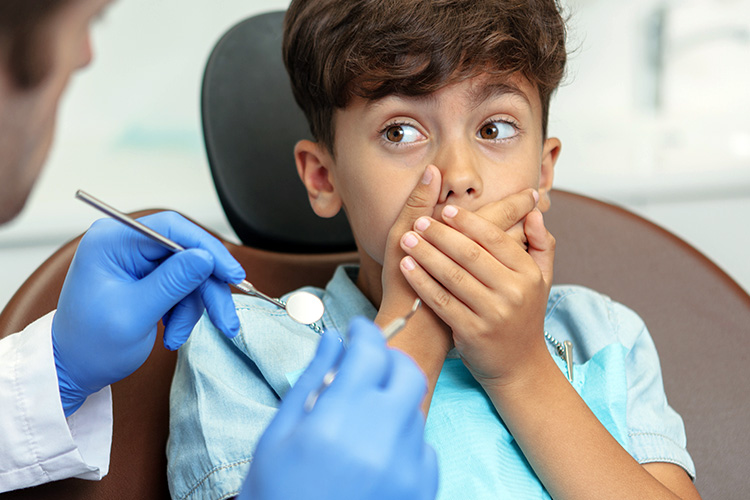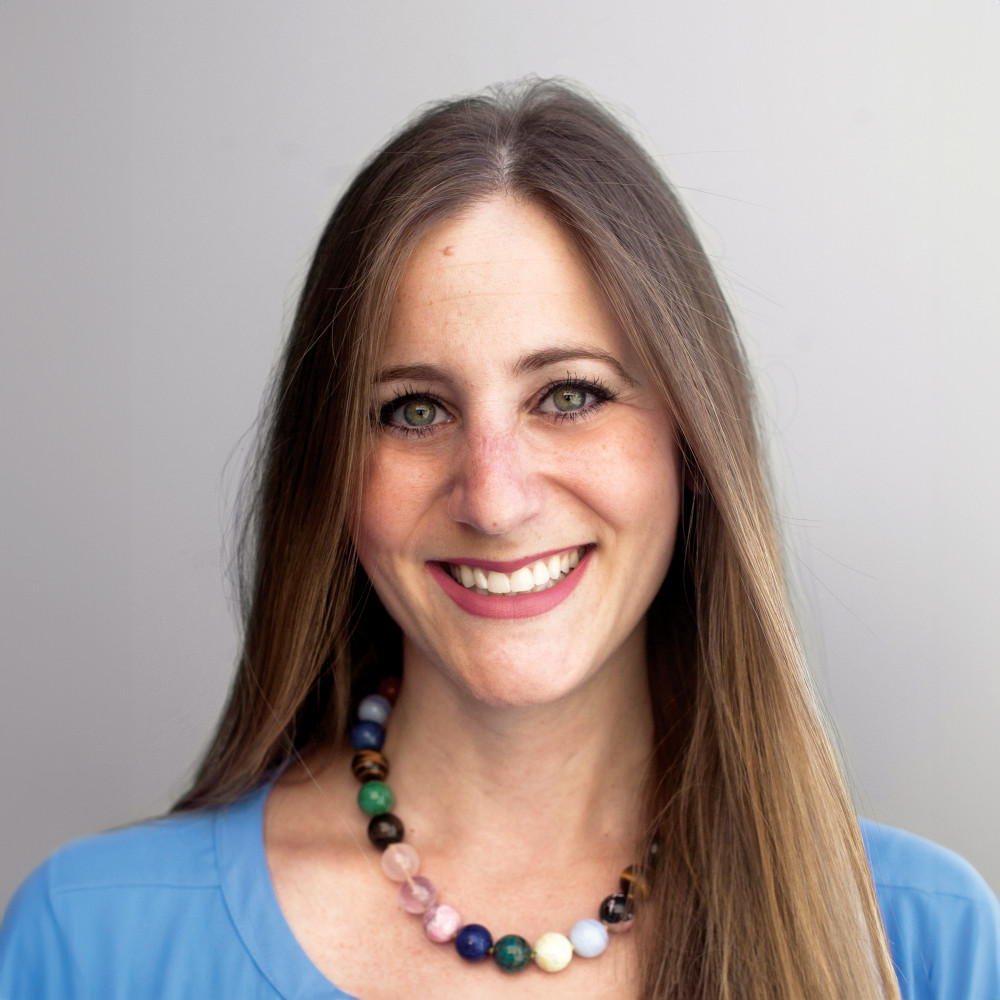New $5.5 million NIH-funded study to test whether sensory adaptations can ease children’s dental fears and anxieties
November 25, 2024
Study led by Leah Stein Duker in partnership with Children's Hospital Los Angeles extends Sensory Adapted Dental Environment research line begun in 2011.
Community and Partners Faculty Research
By Mike McNulty
A new study funded by more than $5.5 million in NIH grants will test whether a Sensory Adapted Dental Environment (SADE) — a novel intervention that provides soothing visual, auditory and tactile input within the dental clinic environment — can reduce anxiety and fear experienced by the general pediatric population during dental treatments.
The project, led by Assistant Professor Leah Stein Duker in partnership with Children’s Hospital Los Angeles (CHLA), will be the first full-scale, randomized controlled trial of a sensory-adapted intervention in the dental environment for typically developing children.
The NIH National Institute of Dental and Craniofacial Research grant is the largest, by total dollar amount, to have ever been awarded to a USC Chan faculty member serving as principal investigator.
Previous SADE studies dating back to 2011 led by Professor Emerita Sharon Cermak explored the intervention’s effectiveness for autistic children. Those studies demonstrated that SADE significantly reduced anxiety in both autistic and typically developing children, prompting further questions about its widespread potential for the general population.
“As a mother myself, I know firsthand how fear and anxiety can permeate kids’ experiences at the dentist’s office,” Stein Duker said. “As an occupational scientist, I want to better understand the degree to which simple, cost-effective and scalable modifications to the sensory environment can improve components of the patient experience.”
Research shows that dental fear and anxiety (DFA) affects up to 42 percent of the general pediatric population. DFA is often manifested as disruptive behaviors during dental exams and procedures, and can lead to higher rates of general anesthesia, inconsistent attendance at dental appointments and, ultimately, poorer oral health.
Research also suggests that up to 33 percent of children experience sensory over-responsivity (SOR), which can be manifested in the dental clinic as intense reactions to stimuli like bright lighting, abrupt sounds or noxious touch in and around the mouth. Although SOR can occur independently of DFA, it is often a contributing factor to DFA and can cause children to react to sensory stimuli in similar ways to DFA.
“Anybody who’s ever felt that tinge of anxiety or trepidation while sitting in the dentist’s chair knows how uncomfortable that can be,” Stein Duker said. “For some people, that feeling is so salient that it turns into behaviors that negatively impact overall oral care and outcomes.”
To pinpoint effectiveness, study will test four intervention conditions
The study will enroll 312 children, aged 6-12 years, equally split between those with DFA and those without. Stein Duker and her team will primarily be recruiting participants from CHLA, and collaborating with the Ketchum-Downtown YMCA, located in Downtown Los Angeles, and the Boys and Girls Club of Metro Los Angeles to recruit and provide care to underserved children. These diverse participants will undergo two dental cleanings 4-6 months apart. Participants will be randomized to receive care according to two of four different interventions: SADE alone, video-based modeling alone (VBM), SADE combined with video-based modeling (SADE-VBM) and the “regular” dental environment (RDE). (VBM is a method by which patients are shown a video of a cooperative model patient undergoing dental treatment in order to familiarize them with the dental setting and the specific steps involved in the forthcoming procedure.)
The study’s goal is to assess how these interventions affect children’s physiological anxiety and behavioral distress during dental cleanings. By examining variables like electrodermal activity and behavior, the researchers aim to understand which method, or combination of methods, most effectively alleviate participant’s DFA.
Another of the research team’s key objectives is to determine how DFA and SOR uniquely contribute to dental anxiety and distress. Researchers will conduct exploratory analyses to examine these factors and assess the degree to which physiological anxiety mediates the effect of the SADE on behavior, and whether or not DFA and SOR moderate the effect of SADE and other strategies. Secondary outcomes, including quality of care, patient satisfaction and cost implications, will also be studied.
Depending on results, Stein Duker anticipates that the SADE approach could be trialed in the future across multiple sites in order to determine its effectiveness in various clinical settings. She also says she’s optimistic about what this trial can do for the hundreds of thousands, if not millions, of American children who dread going to the dentist.
“We’re looking forward to seeing what the data says, because we think that SADE has the potential to revolutionize the ways in which pediatric dental clinics across the nation and world offer more comfortable, positive dental experiences to kids who deserve quality dental care.”
“Sensory Adapted Dental Environments to Enhance Oral Care for Children with and without Dental Fear and Anxiety” (PI: Stein Duker, L.) is supported by NIH NIDCR (UH3 DE031222; UG3 DE031222).
⋯
Next by tag Community and Partners ⟩ Faculty ⟩ Research ⟩







